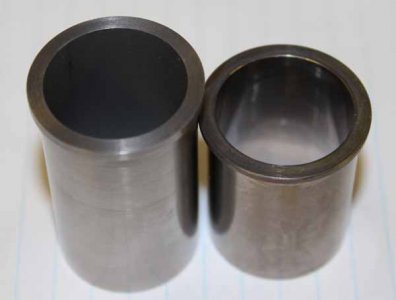If I understand, you mean do the progressive enlarged drill stepping just at the beginning of the hole & then plunge all the way with the biggest size? If so, that would require a lot of in-feed force for the final drill, at least for my equipment. For example my cylinder liners ~ 1" bore x 2" long. No way I could push say a 5/8" or 3/4" drill through steel in one go. Even with a 3/8" drill the material wanted to slide back in the chuck jaws, so I turned a small step that butts against the front of jaws & do the operation blind hole. Actually I consider 'drilling' as a roughing operation just to min ID for my boring bar. I'm less concerned by hole quality than the drill cone catching on the bore of the prior drill & walking off center. But aside from using an annular cutter from both sides & go straight to boring bar, I see no other option.
How the h*ll do they drill long gun barrels anyway? :/


